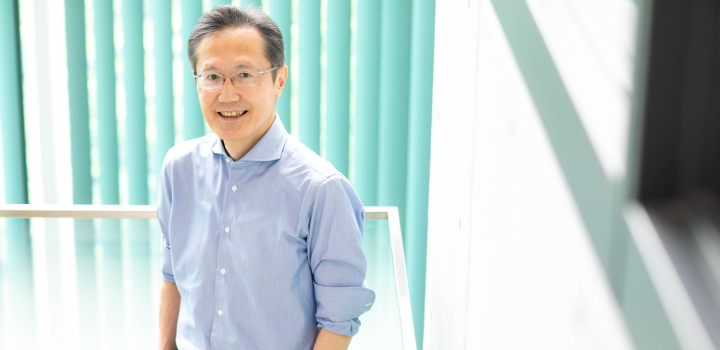Shigeru Kitazawa

Main Lab Location:
Osaka Univ. (Suita Campus)Mailing Address:
1-3 Yamadaoka, Suita City Osaka, 565-0871Email:
kitazawa.shigeru.fbs at osaka-u.ac.jpMy research in CiNet focuses on neural basis for space and time perception.
Space and time that we perceive in our mind are, of course, based on the counterparts in the physical world, but it remains still unknown exactly how the mental space and mental time are constructed in our brain.
Take the mental space for example. We swing our eyes three times a second on average, with a peak angular velocity as fast as 100-500 degrees/s. But the world in our mind are so stable that we do not even notice our own eye movements. Why do blurred images on the retina not appear in our conscious mind? What are we looking at, while the blurred retinal images are blocked from our mind? How are two distinct retinal images, one before and the other after the rapid eye movement, mapped to the same part in the mental space? As for the mental time, it does not flow equably as hypothesized in physics. For example, subjective temporal order of successive stimuli are inverted just by crossing our arms, or just before the onset of each rapid eye movement. A key word for solving these problems is “postdiction”, a notion that the mental space and the mental time are constructed by our brain from sensory signals sampled over the past ~100 ms by combining information across multiple areas in the brain. We are searching for the neural basis of “postdiction” by applying techniques in psychophysics and neuroimaging to human participants, and neurophysiological techniques to monkeys.
Why the world remains stable while we move our eyes has been repeatedly questioned by great thinkers like Alhazen, Descartes, and Helmholtz, for more than 1000 years at least. We hope that our research would ultimately yield final answers to the long-lasting historical question, in addition to other important questions regarding the mental space, time, and their interactions.
Selected Publications:
Inoue M, Kitazawa S. Motor error in parietal area 5 and target error in area 7 drive distinctive adaptation in reaching. Curr Biol 28, 2250-2262 (2018)
Inoue M, Uchimura M & Kitazawa S. Error signals in motor cortices drive adaptation in reaching. Neuron 90, 1114-1126 (2016)
Miyazaki, M., Yamamoto, S., Uchida, S. & Kitazawa, S. Bayesian calibration of simultaneity in tactile temporal order judgment. Nat Neurosci 9, 875-7 (2006)
Yamamoto S, Kitazawa S. Sensation at the tips of invisible tools. Nat Neurosci 4, 979-980 (2001)
Yamamoto, S. & Kitazawa, S. Reversal of subjective temporal order due to arm crossing. Nat Neurosci 4, 759-65 (2001)
Kitazawa S, Kimura T, Yin PB. Cerebellar complex spikes encode both destinations and errors in arm movements. Nature 392, 494-497 (1998)
Lab Members:
Researcher
・Masanori Saruwatari
・Masato Inoue
・Kei Watanabe
・Mikio Inagaki
・Yuki Murai
・Lis Kanashiro Pereira
Student
https://kitazawa-lab.jp/en/member/
